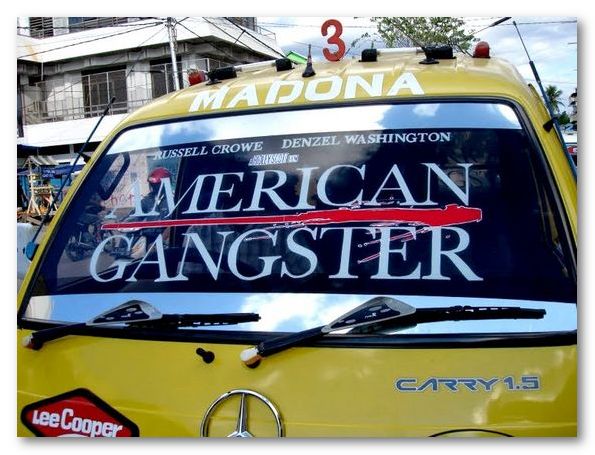Helene van Klinken
|
Prowling the streets of Kupang
|
I’m waiting for a number three yellow bemo, or small minibus, in Kupang, West Timor, capital city of East Nusatenggara province. But the oncoming vehicle has a large sign splashed across the front windscreen, almost totally obscuring the driver: ‘American gangster’, it reads. Hardly reassured, I cautiously clamber aboard, squashing in with the ten other passengers. Visibility to the outside is even less comforting than the slogan that’s blocking the driver’s view.
Local people tell me that the reason the bemo of Kupang are decorated is to attract passengers. I ask a group of school students riding with me if they choose bemo according to the decorations. ‘Of course!’, they chorus. Still not convinced, I ask, ‘So if you are waiting, you will let bemo pass by until one comes along that takes your fancy?’ ‘Of course!’ Older passengers smile and nod tolerantly. Someone adds that she always picks a bemo with a young driver, preferably with spiky hair and earrings: ‘An old driver would never get anyone.’ Old drivers (anyone over about twenty) have to be satisfied with driving bemo which operate to destinations further out of town.
An advancing vehicle leaves no doubt that sound also has a role in drawing and entertaining passengers: large speakers located under the bench seats and often outside attached to the back window pump out techno beat at deafening volumes. Reverberating air horns add to the cacophony. Bemo stop running by seven o’clock in the evening, leaving just enough time to make use of their final drawing card: their bright neon lights and flashing signs.
‘American Gangster’ is just one of the many provocative and sometimes puzzling slogans plastered on front windscreens. Most are in English: Hooligan; Gerald… God bless you; Revolution… play it loud; Shoot me! Some of them seem specifically designed to tempt fate, like ‘Crash’. Others manage to be mystifying and sinister at the same time, like ‘Godles symtems’. And of course there are also many in Indonesian, or mixed, like Berani tampil beda (Dare to be different); Preman Kampus (Campus Hoodlum); Inspirasi! (Inspiration);Ditik Hot (Hot Spot); Play boy… Lagi Jomblo (Playboy… currently single).
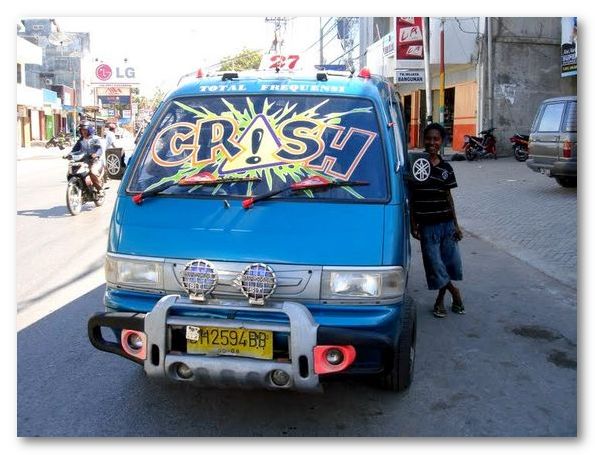 |
Fancy a ride anyone?
|
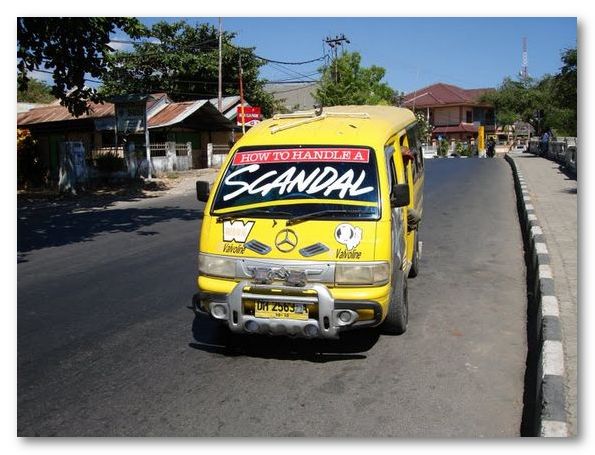 |
‘How to handle a SCANDAL’
|
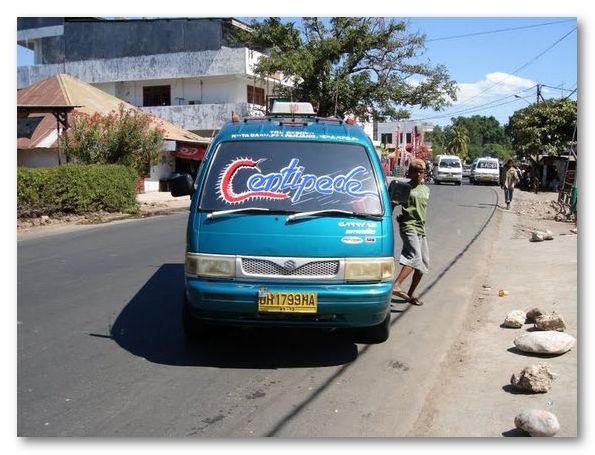 |
‘Centipede’
|
The rear window offers a different space. It is not for attracting passengers and is often used instead to convey a message. In Kupang the majority of the population is Christian, so many back windows depict prayers, Bible verses or pictures of Jesus. Symbols of other religions feature, though I saw none with an overt Islamic message.
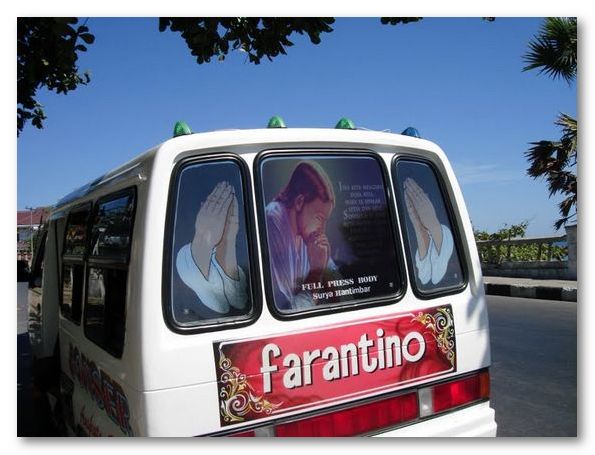 |
A bible quote from John 19
|
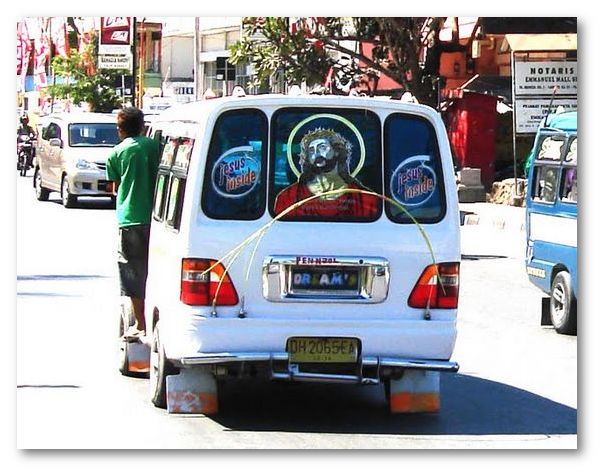 |
‘Jesus inside’
|
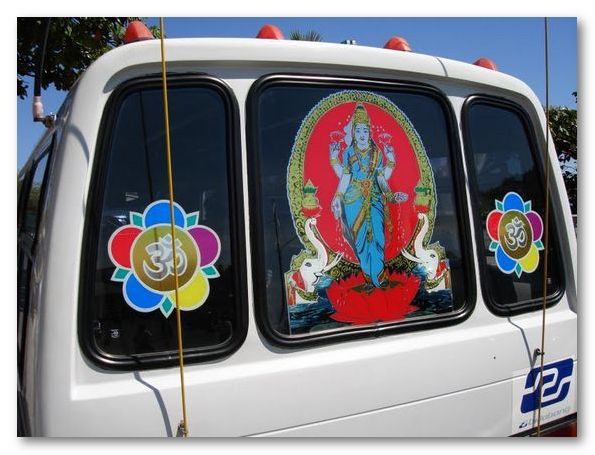 |
Not the ordinary religious imagery
|
Some rear window messages are serious, some cryptic, while others border on the pornographic. There are also plenty of youth culture and musical references.
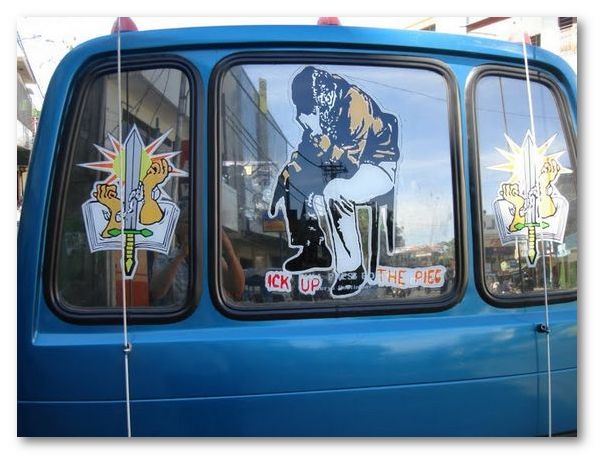 |
‘Pick up the pieces’
|
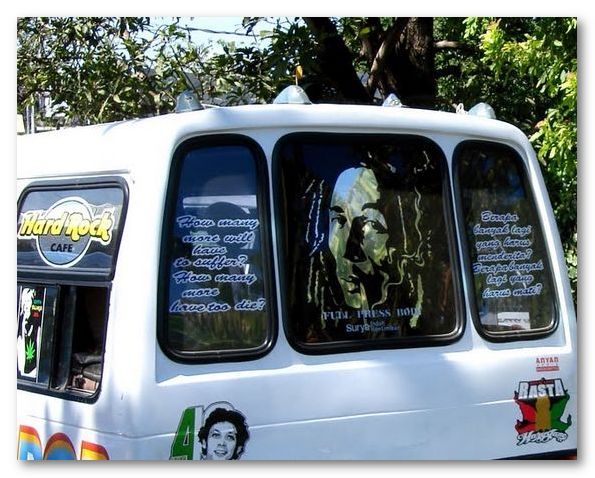 |
Variation on Bob Marley lyrics, ‘How many more will have to suffer, how many more have to die’
|
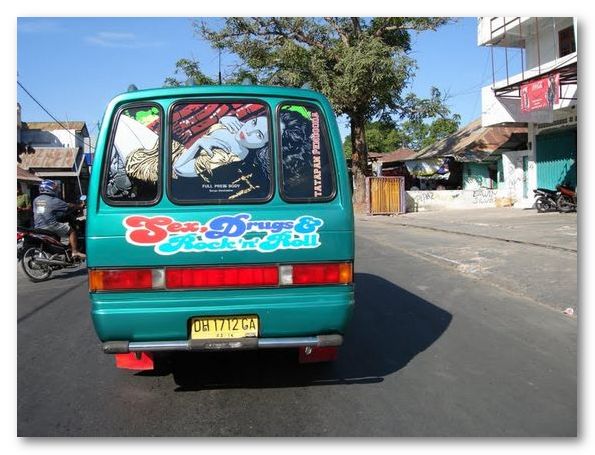 |
‘Tatapan penggoda’ (seductive gaze)
‘Sex, drugs and rock and roll’
|
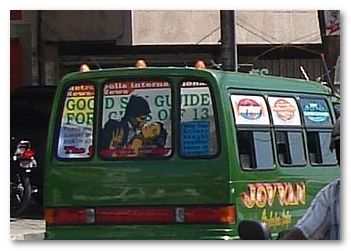 |
Copied from a page of a London tabloid? ‘Good sex guide for girls of 13' and ‘Why has Britney
bought another house in London?’
|
‘American Gangster’ and his fellow drivers all have their own, even younger, chain-smoking fare collectors and passenger touters who spring in and out of moving vehicles with great agility. However, these young boys and the drivers are not the cowboys that we are at first tempted to think. They do enjoy the decorations, but many are concerned about the difficulty they experience driving with obscured vision. I asked ‘American Gangster’ what he thought. He said, with no apparent irony, that his windscreen is ‘transparent’, and not completely covered like some others. However, he finds it difficult driving at night and when it’s raining. But, he added, if his bemo windscreen was not decorated then he wouldn’t get passengers. Another young 17-year-old driver was more straightforward. According to him, most drivers think that front windscreens should be clear, ‘the plainer the better’.
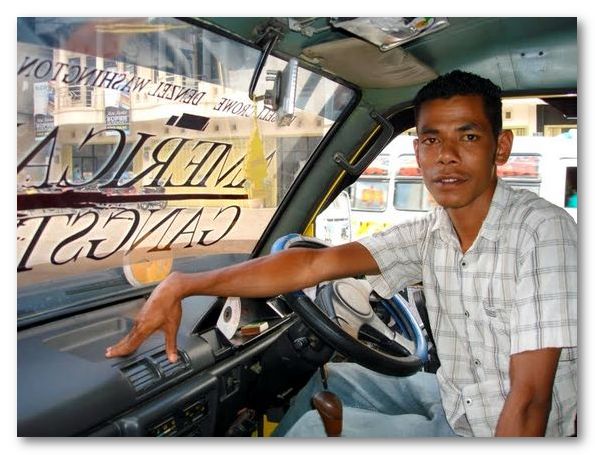 |
‘American Gangster’
|
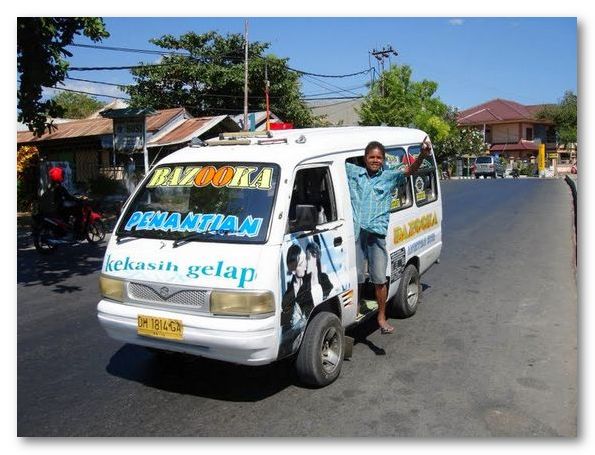 |
Calling the destination
|
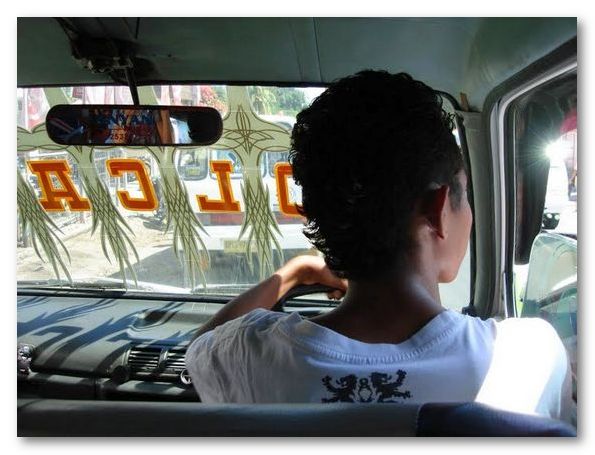 |
The view from inside
|
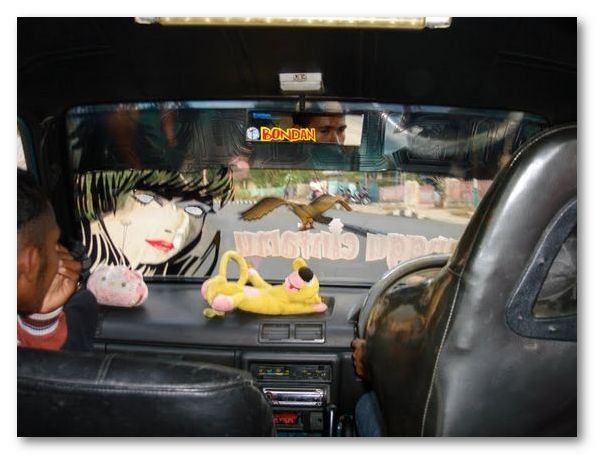 |
Out there, the road
|
It’s not drivers who determine how their bemo look. All the decorations (and that includes dangling soft toys as well as the stickers) and music CDs are provided by the owners of the vehicles. No driver owns his own vehicle. Though some rich individuals own several vehicles, there is no monopoly, feeding the fierce competition for passengers and the spiral of decoration.
Budi makes stickers for bemo in a cramped, dingy roadside office. He uses a computer program to manipulate pictures, then prints them onto transparent material. Budi has magazines which he mines for pictures, but some owners bring their own, or want him to copy new fads that have become popular and are drawing attention. After applying the sticker to the inside of the glass, Budi cuts holes for the driver to see through. He says some owners are not aware that covering the windscreen causes difficulties for drivers.
The police often fine the owners, and force them to strip off the stickers. But, says Budi, the next day they come back to him for new decorations. These stickers are not cheap. A single windscreen job costs about Rp250,000 (around A$30), which is a more than a day’s takings. Then there is the back screen and the side windows. In the hot, sunny climate and the torrential tropical rain the stickers only look good for about three months. But you don’t see many bemo with faded stickers, so the investment must be worthwhile.
I was entertained by the colourful slogans plastered all over the bemo, though I also couldn’t help wondering whether the outlay on stickers wouldn’t be better spent paying the drivers a higher wage. Some drivers receive a fixed amount of about Rp.150,000 per month plus ten per cent of the takings, somewhere between Rp.100,000 and 200,000 per day.
While bemos operate all over the Indonesian archipelago, nowhere else are they as flamboyant as in Kupang. Town residents are proud of this. ‘American Gangster’ and his fellows bring life to this badly planned and lacklustre city, as they dart in and out of traffic and race ahead of one another competing for passengers, their gaudy and incongruous stickers and slogans blazing and their horns and music blaring. ii
Helene van Klinken (helenevk@gmail.com) is conducting research on issues related to women and children in Indonesia.
Inside Indonesia 97: Jul-Sep 2009














